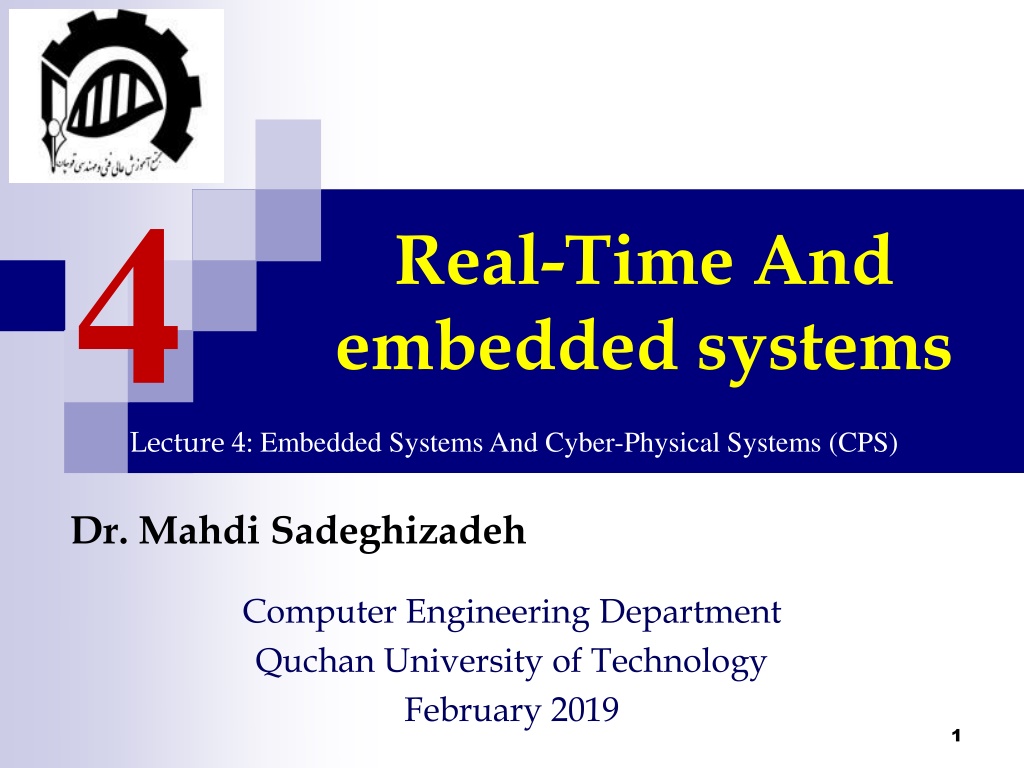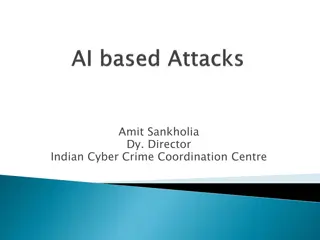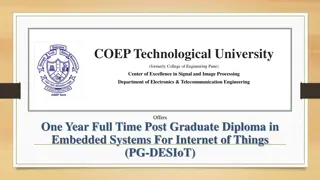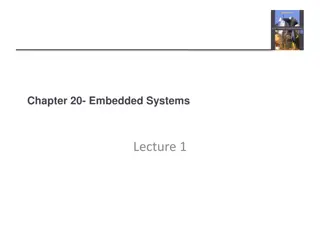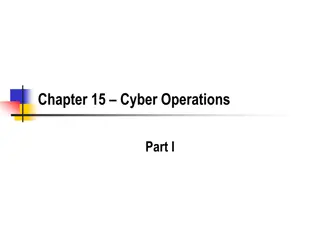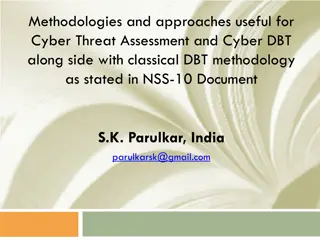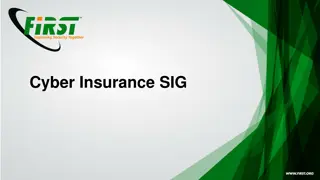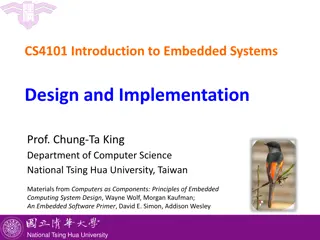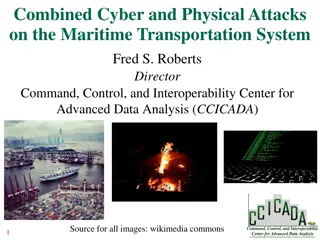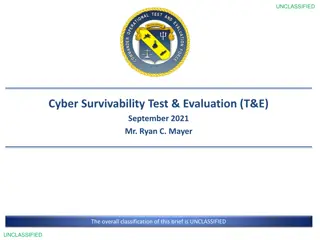Understanding Embedded Systems and Cyber-Physical Systems
Embedded systems are specialized computer systems embedded within larger systems, such as control systems and car controllers. This lecture covers real-time aspects, applications of Cyber-Physical Systems (CPS), and examples like the Boeing 777/Airbus A380 cockpit. It discusses the design process of CPSs and introduces the STARMAC architecture. Control systems, multi-rate systems, and a car controller example are also explored within the context of real-time embedded systems.
Download Presentation

Please find below an Image/Link to download the presentation.
The content on the website is provided AS IS for your information and personal use only. It may not be sold, licensed, or shared on other websites without obtaining consent from the author. Download presentation by click this link. If you encounter any issues during the download, it is possible that the publisher has removed the file from their server.
E N D
Presentation Transcript
4 Lecture 4: Embedded Systems And Cyber-Physical Systems (CPS) Real-Time And embedded systems Dr. Mahdi Sadeghizadeh Computer Engineering Department Quchan University of Technology February 2019 1
Outline Embedded Systems Control System A Car Controller Real-time Embedded System Cyber-Physical System (CPS) Applications of CPS Motivating Example The Design Process of CPSs The STARMAC architecture 2
Embedded Systems An embedded system is a computer system with a dedicated function within a larger system. Embedded systems (ES) = information processing systems embedded into a larger product 3
Boeing 777/Airbus A380 Cockpit Boeing 777 Cockpit Airbus A380 Cockpit 4
Example: Control System Many embedded systems are control systems Robotics Automotive System Simple Control System Multi-Rate Control System 5
Simple Control System A simple example: one-sensor and one-actuator control system. Pseudo-code for this system set timer to interrupt periodically with period T; at each timer interrupt do do analog-to-digital conversion to get y; compute control output u; output u and do digital-to-analog conversion; T is called the sampling period, which is a key design choice. 6
Multi-Rate Control System More complicated control systems have multiple sensors and actuators and must support control loops of different rates. Each Task Utilization: Ci / Ti 7
cyber-physical system (CPS) A cyber-physical system (CPS) is an integration of computation with physical processes whose behavior is defined by both cyber and physical parts of the system. Embedded computers and networks monitor and control the physical processes, usually with feedback loops where physical processes affect computations and vice versa. As an intellectual challenge, CPS is about the intersection, not the union, of the physical and the cyber. It is not sufficient to separately understand the physical components and the computational components. We must instead understand their interaction. CPS applications arguably have the potential to eclipse the 20th century information technology (IT) revolution. 11
Applications of CPS Example 1: Consider a city where traffic lights and cars cooperate to ensure efficient flow of traffic. In particular, imagine never having to stop at a red light unless there is actual cross traffic. Such a system could be realized with expensive infrastructure that detects cars on the road. 12
Applications of CPS But a better approach might be to have the cars themselves cooperate. They track their position and communicate to cooperatively use shared resources such as intersections. Making such a system reliable, of course, is essential to its viability. Failures could be disastrous. 13
Applications of CPS Example 2: Heart surgery often requires stopping the heart, performing the surgery, and then restarting the heart. Such surgery is extremely risky and carries many detrimental side effects. A number of research teams have been working on an alternative where a surgeon can operate on a beating heart rather than stopping the heart. There are two key ideas that make this possible. First, surgical tools can be robotically controlled so that they move with the motion of the heart (Kremen,2008). A surgeon can therefore use a tool to apply constant pressure to a point on the heart while the heart continues to beat. Second, a stereoscopic video system can present to the surgeon a video illusion of a still heart (Rice, 2008). To the surgeon, it looks as if the heart has been stopped, while in reality, the heart continues to beat. To realize such a surgical system requires extensive modeling of the heart, the tools, the computational hardware, and the software. It requires careful design of the software that ensures precise timing and safe fallback behaviors to handle malfunctions. And it requires detailed analysis of the models and the designs to provide high confidence. 14
Applications of CPS Example 3: Consider a high-speed printing press for a print-on-demand service. This might be structured similarly to Figure, but with many more platforms, sensors, and actuators. The actuators may control motors that drive paper through the press and ink onto the paper. The control laws may include a strategy for compensating for paper stretch, which will typically depend on the type of paper, the temperature, and the humidity. A networked structure like that in Figure might be used to induce rapid shutdown to prevent damage to the equipment in case of paper jams. Such shutdowns need to be tightly orchestrated across the entire system to prevent disasters. Similar situations are found in high-end instrumentation systems and in energy production and distribution (Eidson et al., 2009). 15
Motivating Example The specific application is the Stanford testbed of autonomous rotorcraft for multi agent control (STARMAC), developed by Claire Tomlin and colleagues as a cooperative effort at Stanford and Berkeley (Hoffmann et al., 2004). The STARMAC is a small quadrotor aircraft; it is shown in flight in Figure. Its primary purpose is to serve as a testbed for experimenting with multi-vehicle autonomous control techniques. The objective is to be able to have multiple vehicles cooperate on a common task. 16
Motivating Example There are considerable challenges in making such a system work. First, controlling the vehicle is not trivial. The main actuators are the four rotors, which produce a variable amount of downward thrust. By balancing the thrust from the four rotors, the vehicle can take off, land, turn, and even flip in the air. How do we determine what thrust to apply? Sophisticated control algorithms are required. Second, the weight of the vehicle is a major consideration. The heavier it is, the more stored energy it needs to carry, which of course makes it even heavier. The heavier it is, the more thrust it needs to fly, which implies bigger and more powerful motors and rotors. The design crosses a major threshold when the vehicle is heavy enough that the rotors become dangerous to humans. Even with a relatively light vehicle, safety is a considerable concern, and the system needs to be designed with fault handling. Third, the vehicle needs to operate in a context, interacting with its environment. It might, for example, be under the continuous control of a watchful human who operates it by remote control. Or it might be expected to operate autonomously, to take off, perform some mission, return, and land. Autonomous operation is enormously complex and challenging because it cannot benefit from the watchful human. Autonomous operation demands more sophisticated sensors. The vehicle needs to keep track of where it is (it needs to perform localization). It needs to sense obstacles, and it needs to know where the ground is. With good design, it is even possible for such vehicles to autonomously land on the pitching deck of a ship. The vehicle also needs to continuously monitor its own health, to detect malfunctions and react to them so as to contain the damage. 17
The Design Process of CPSs Modeling is the process of gaining a deeper understanding of a system through Imitation. Models imitate the system and reflect properties of the system. Models specify what a system does. Design is the structured creation of artifacts. It specifies how a system does what it does. Analysis is the process of gaining a deeper understanding of a system through dissection. It specifies why a system does what it does (or fails to do what a model says it should do). 18
The STARMAC architecture The hardware architecture of the first generation STARMAC quadrotor is shown: At the left and bottom of the figure are a number of sensors used by the vehicle to determine where it is (localization) and what is around it. 19
The STARMAC architecture The hardware architecture of the first generation STARMAC quadrotor is shown: In the middle are three boxes showing three distinct microprocessors. The Robostix is an Atmel AVR 8-bit microcontroller that runs with no operating system and performs the low-level control algorithms to keep the craft flying. The other two processors perform higher-level tasks with the help of an operating system. Both processors include wireless links that can be used by cooperating vehicles and ground controllers. 20
Summary Cyber-physical systems are heterogeneous blends by nature. They combine computation, communication, and physical dynamics. They are harder to model, harder to design, and harder to analyze than homogeneous systems. 21
Thank You 22
